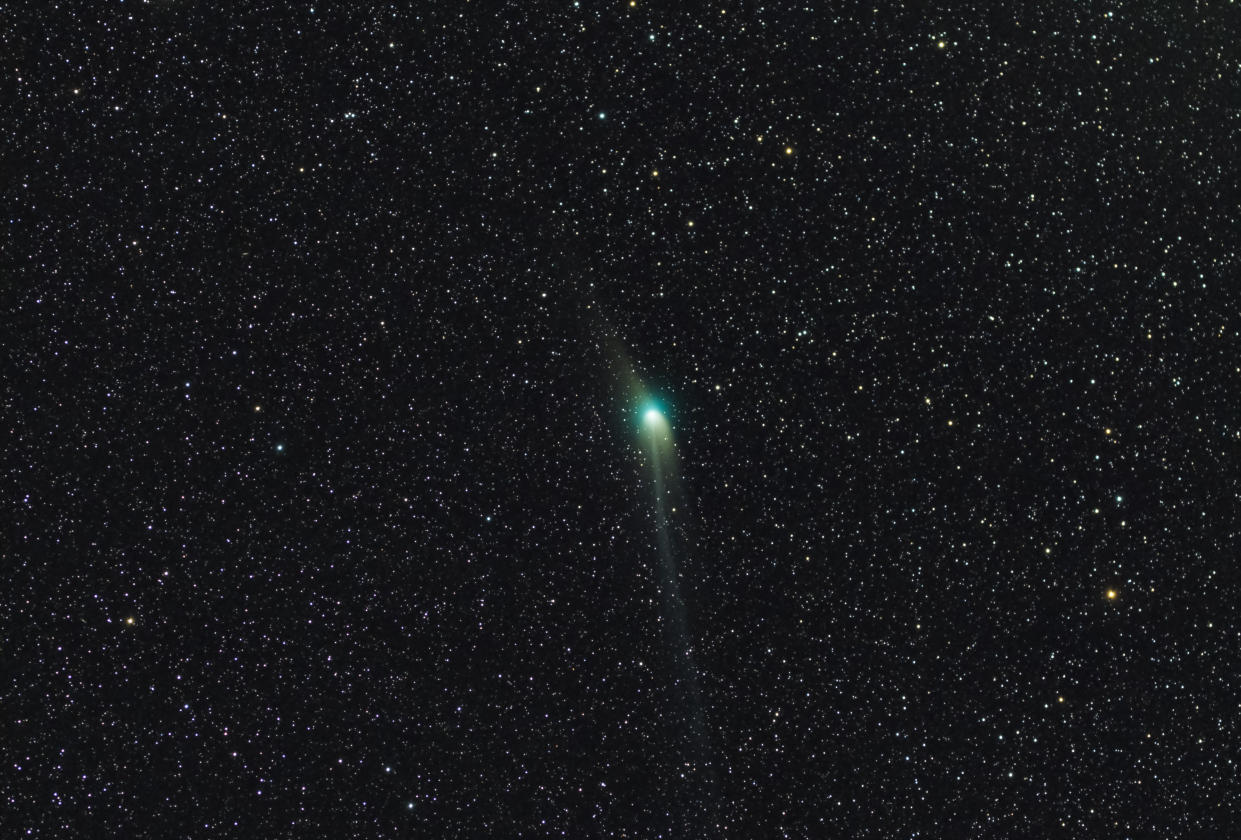Comet which hasn’t been seen for 80,000 years ‘could outshine the stars’

A newly-detected comet which orbits the Sun just once every 80,660 years could blaze across the skies outshining the stars next year, astronomers have said.
The comet could become visible to the naked eye when it makes its closest approach to Earth on 13 October 2024.
The comet - known as C/2023 A3 (Tsuchinshan-ATLAS) was spotted on February 2022 this year by the Asteroid Terrestrial-impact Late Alert System (ATLAS) telescope in South Africa.
☄️ A new noteworthy comet, C/2023 A3 (Tsuchinshan-ATLAS), was discovered earlier this year. It could reach naked-eye visibility by mid-October 2024. Here is what we know about it so far 👇https://t.co/yk4N6TNXyX
— Star Walk (@StarWalk) March 3, 2023
Read more: What are fast radio bursts, and why do they look like aliens?
It was confirmed by astronomers at the Purple Mountain Observatory in China on January 9 - hence it bears both names.
When it was found, it was still 7.3 astronomical units (AU) from the sun - and is moving steadily towards the inner solar system.
The comet is travelling extremely fast, and moving at 180,610 miles per hour relative to Earth.
Researchers say it could become visible to amateur telescopes in June 2024, and could be brighter than this year’s green comet.
Did you hear? Astronomers have found a new comet! They've labeled it C/2023 A3 (Tsuchinshan-ATLAS). And it could be quite bright ... in October 2024. ☄️
Read more about the new comet and see photos and illustrations: https://t.co/OYB8gy18lD
📸 University of Arizona. pic.twitter.com/4dYxOIhgWk— EarthSky (@earthskyscience) March 3, 2023
Newly-discovered object #A10SVYR is possibly a comet that will brighten as it passes through the inner solar system next year.https://t.co/RQQuslhm2ipic.twitter.com/zMiyjqn0tG
— Tony Dunn (@tony873004) February 26, 2023
Read more: Telescope detects 100 mysterious radio signals
The comet is thought to have come from the distant Oort cloud at the edge of the solar system.
The Oort Cloud is a spherical region almost a light-year in diameter and thought to contain hundreds of billions of comets.
Comets are the icy leftovers from the formation of the solar system 4.6 billion years ago.
Comets are notoriously unpredictable, researchers have said, and there is a chance that this one will disintegrate before making its approach next year.
Watch: Did you know: what's the difference between a comet and a meteor?


